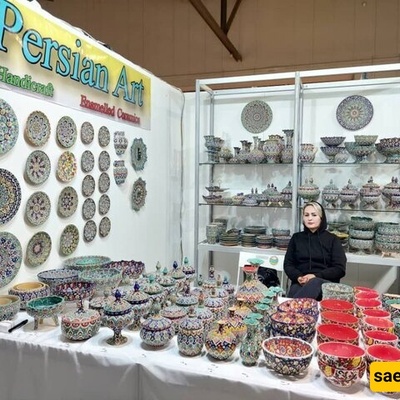SAEDNEWS: A candid photograph of former Iranian President Mahmoud Ahmadinejad in his modest private home has stirred public interest, highlighting the simplicity of a man who once held Iran’s highest office — and still chooses machine-made rugs, red cushions, and plain fruit trays over political pomp.

According to Saed News, a recently circulated photo of Mahmoud Ahmadinejad, Iran’s controversial former president, has sparked fresh curiosity — not about policy or politics, but about how he lives behind closed doors. The image shows Ahmadinejad seated among family members in his private home, surrounded by a notably humble domestic setting: mass-produced carpets, plain red cushions, simple plates of fruit, and unadorned sweets.

Ahmadinejad, born in 1956, served as Iran’s sixth president from 2005 to 2013. Before rising to national prominence, he held a variety of posts including Governor of Ardabil Province (1993–1997) and Mayor of Tehran (2003–2005). Even after leaving the presidency, he retained a presence in Iranian political life as a member of the Expediency Discernment Council and associate professor at Iran University of Science and Technology.

Despite his enduring influence — and notoriety — Ahmadinejad has long cultivated an image of modesty. That reputation appears reinforced by the informal photograph, which stands in stark contrast to the more lavish displays often associated with Iran’s elite. With no ostentatious décor in sight, the snapshot reveals a domestic environment that some interpret as consistent with his populist identity: self-effacing, grounded, and in alignment with the working-class image he projected during his presidency.
This latest glimpse into his personal life arrives at a time when economic inequality and corruption remain front-of-mind for many Iranians. In such a context, the image plays to public nostalgia for leaders perceived as being “of the people” — even those whose political legacies are fiercely debated.
Still, critics argue that appearances can be carefully constructed. Ahmadinejad’s presidency was marked by internal repression, contentious nuclear policies, and sharp confrontations with both domestic rivals and the international community. Yet his down-to-earth persona — whether authentic or curated — continues to strike a chord among segments of the population weary of privilege and pageantry.
While Ahmadinejad is no longer at the center of Iranian politics, this unfiltered moment in his living room has reignited conversation about leadership, austerity, and the enduring appeal of simplicity in a society grappling with complexity.

